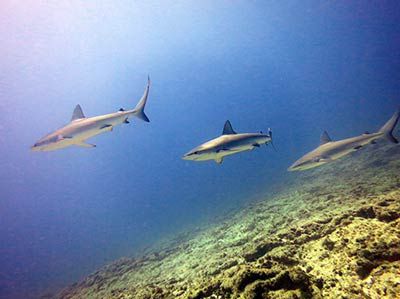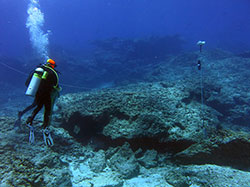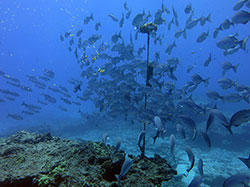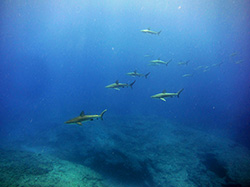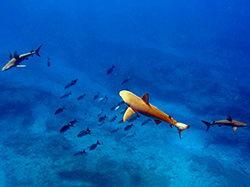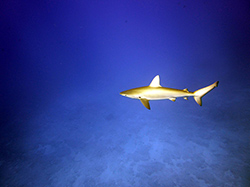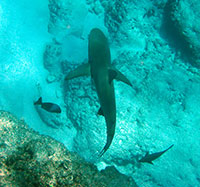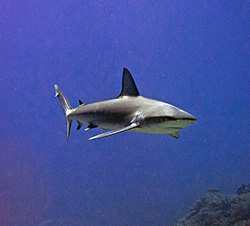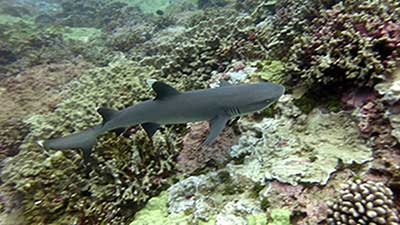RAMP | August 25, 2014: The Real Shark Week
Although the Discovery Channel’s high adrenaline “Shark Week” is over, the real shark week – or should we say Shark 24/7 – continues in Papahānaumokuākea Marine National Monument (PMNM).
The Northwestern Hawaiian Islands makes up three quarters of the remotest island chain on Earth (Hawaiʻi), more than a thousand miles in any direction to the closest landmass. Because it is so far removed from direct human impacts, PMNM serves as an example of what an intact and healthy ecosystem should look like.
The shallow marine portion of the Monument is nearly pristine and has been described as a “predator-dominated ecosystem,” an increasingly rare phenomenon in the world’s oceans. Large apex predators such as sharks, ulua (giant trevally), and grouper that are rarely seen and heavily overfished in populated areas of the world are extremely abundant in the Monument. These fishes compose 54 percent of the biomass (total weight of living fish in any given area) on Monument reefs, whereas the biomass of similar habitats in the main Hawaiian Islands is closer to just three percent. With more sharks in the water, we tend to see more fish than we do in populated areas, a sign of a balanced ecosystem. Sharks weed out the weak and sick, keeping populations healthy.
While at Midway Atoll, a team of divers swapped out acoustic receivers for the shark research lab of the Hawaiʻi Institute of Marine Biology (HIMB). These receivers have been deployed on reefs around Hawaiʻi to track the migration of tagged large pelagic predators, including sharks. For information, visit http://www.hawaii.edu/himb/ReefPredator/NWHI%20Predator.html.
During the RAMP expedition, researchers regularly encountered sharks during their survey work. While they saw sharks at most locations, they saw many while diving at Midway Atoll. Rather than ensuing in a death-defying struggle, the scientists and sharks just went about their business as usual. Well, for the most part. Researchers did look up to snap the occasional picture.
Return to RAMP Expedition Log.
